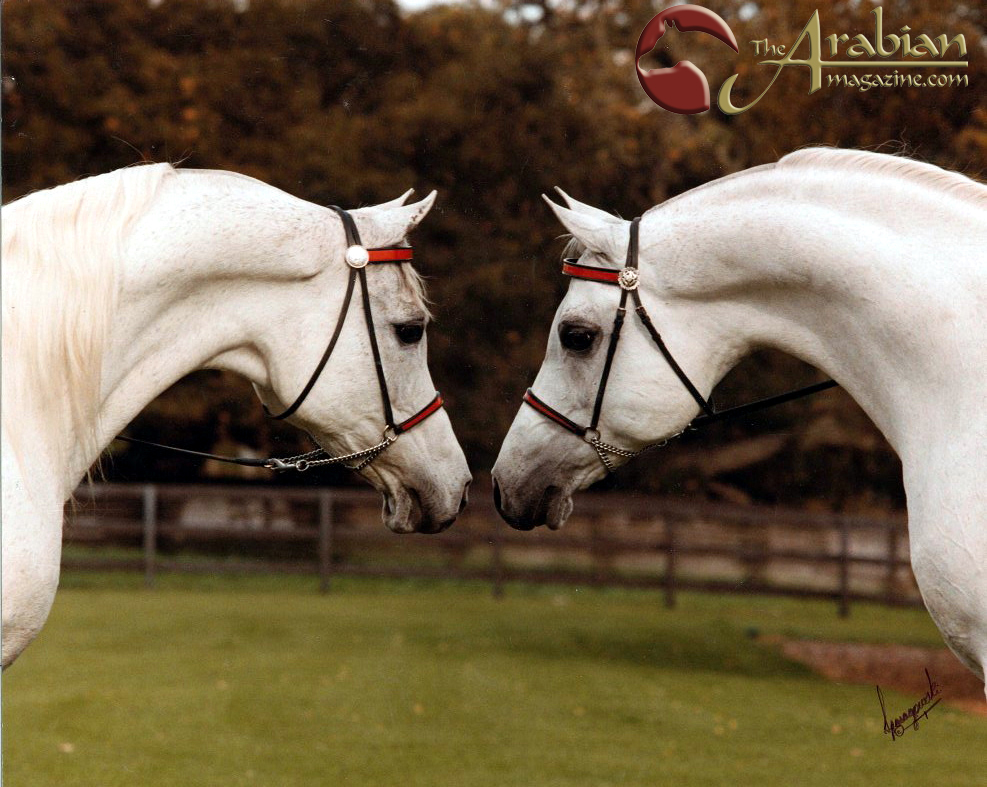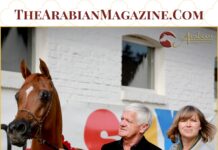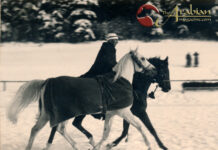Gainey Arabians remains one of the most influential non-straight Egyptian private breeding farms in the past 100 years. Founded in the late 1930s, Gainey Arabians became renowned for stallions such as Ferzon and Gai Parada, with horses bearing the ‘Gai’ prefix still significant in modern-day pedigrees. In part one of this excellent feature by Paul Atkinson, we look at the early story of Gainey Arabians.
First shared in The Arabian Magazine Collectors’ Edition 2009.
For what is the Arabian, if not beautiful?
Mr Daniel C Gainey
What can be said that hasn’t been said before about an American stud farm that has become as renowned as Gainey Arabians? Many enthusiasts around the world know that the Gainey breeding plan has been in existence since the late 1930s and that it all began when its founder, Mr Daniel C Gainey, was presented with an Arabian colt and his passionate quest for perfection began. He set out to learn as much about the Arabian breed as possible and being a man of great energy and drive, he soon associated with the great breeders of the time, picking their brains and making his own judgments as to what he might and might not incorporate into his breeding scheme. He worked with diligence and determination and though he would probably have denied it, he possessed a rare talent for breeding horses.

That was over 60 years ago, and he would be proud that his family has striven to remain true to his concepts ever since. While the breeding programme has periodically received necessary modification and fine-tuning, the principles formed at the very beginning are still firmly in place. The goal is to maintain the cornerstones of true Arabian type, excellent temperament and real working-horse ability. The mantle of control has passed down the generations, from Daniel C Gainey to his son Dan J Gainey and now to Ms Robin Gainey, who continues to weave the vital threads of the past with a modern outlook and a clear vision on how to proceed towards the future. Robin confirms: “It is our intention to continue our programme, albeit on a smaller scale, far into the future by using Daniel C Gainey’s ‘golden’ formula: one-quarter outcross, taking our Gainey mares out to new blood, then breeding those resulting foals back into the Gainey blood. This has proven to be a successful and a reliable recipe for success, in both the foaling barn and the show-ring.”
The early years
A brief glimpse at the vast amount of literature available on the Gainey horses proves just how revered they have become. It is generally accepted that these refined and beautiful horses breed predictably, that they can be relied upon to consistently reproduce their excellent qualities from generation to generation and that they are not a mere fad nor a fashion. In fact, the late Dr Mohammed el Marsafi, Director of the Egyptian Agricultural Organisation (EAO), believed that the Gainey horses had become established as a sub-strain within the breed. They are for many breeders a guaranteed, reliable method of producing look-a-like, first-rate horses that also happen to be ethereally beautiful and ideal riding horses.

This predictability arises from Mr Gainey’s determination to obtain the best foundation stock that demonstrated the physical attributes he so admired, as well as acquiring the specific bloodlines he thought would most likely offer the best results. Among his original purchases, Mr Gainey purchased Rageyma, a daughter of desert-bred Mirage, who was in foal to *Raffles, a little horse that became a legend and who was imported to the USA from the UK’s Crabbet Stud, as indeed was Mirage. This beautiful, typey mare had already produced one foal from this cross, the colt Geym, who was selected to remain at stud at the famed Selby Ranch. These bloodlines added elegance and beauty to the utilitarian look of the Arabians of the time and Mr Gainey quickly decided it was that particular look he wished to capture in his own breeding programme and so, the thread had started. Rageyma foaled a delightful Raffles filly named Gajala and she was to become one of the most crucial pillars of the Gainey Arabians. Raffles and Raseyn were both sons of Skowronek and those two young imports became essential components in the development of the Gainey horses.
Ferzon
Then there is the unquestionable impact made when, after prolonged negotiation, Gainey acquired the incredible young colt Ferzon (Ferneyn x Fersara). It took almost two years of bargaining and a very large offer before the colt’s breeders, Frank and Helen McCoy, eventually relented. The effort was well worth the while. With Mr Gainey’s management, Ferzon was destined to greatness as a sire and within a short period of time, he had fixed a clearly defined type within the Gainey herd. His daughters and granddaughters were both genetically and physically alike. Furthermore, his influence strengthened throughout the years due to the Gainey policy of line-breeding and carefully inbreeding to the stallion. Ferzon features in every modern-day Gainey pedigree and his influence has been inestimable. He achieved renowned status both in the United States and internationally and his descendants feature in prominent breeding programmes throughout the world.
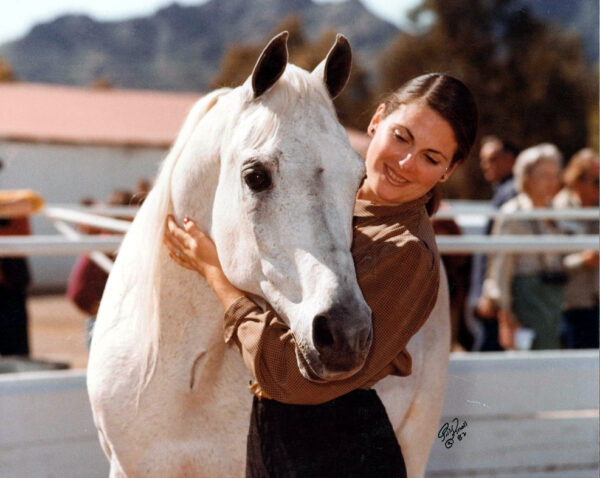
Ferzon and Gajala made history together and they became linked to the Gainey programme forever, producing some of the most classically beautiful Arabian horses in the world and helping to set a certain look that would eventually establish the Gainey Arabian as a recognised sub-strain. It can easily be seen that most of these horses carry multiple crosses to the early Crabbet imports to America and to the Polish bred legend Skowronek in particular.
For the next 30 years or so, such linebred horses such as Gazon, Galatina, Raffon, Gavrelle, Gai Adventure, Gaizon, Ga-Rageyma, Gafferra, Ga-Gajala, Shar Mar Ferzay and Gai Champion became famous in their own right and helped perpetuate the Gainey look.
The golden combination
Another momentous occasion arose when the Azraff (Raffles x Azja IV) daughter Rafeymaz visited Ferzon and Mr Gainey in turn bred the Ferzon/Gajala daughter Ga-Rageyma to Azraff to produce the beautiful Gai-Louise and a golden cross was born. Ferzon was used on Azraff daughters and Azraff on Ferzon daughters. The crosses were outstanding and many triumphs followed as a result of that illustrious combination. There are too many top-quality horses that could be listed here, but no article on the Gainey Stud, however condensed it may be, could be complete without mention of the exquisite stallion and sire-extraordinaire Gai Parada (Ferzon x Azleta by Azraff), a perfect example of the Ferzon/Azraff combination.
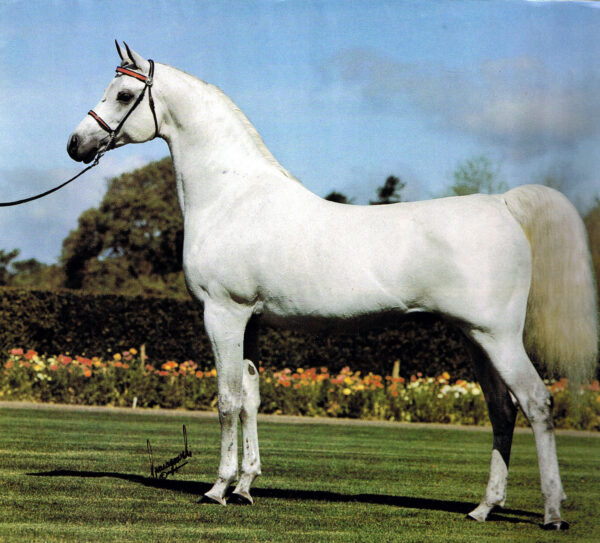
This magnificent horse created a renewed storm of interest in the Gainey horses and it was the decision of Mr Daniel J Gainey to campaign Gai Parada in the show-ring, exhibiting his flagship stallion both in-hand and in performance classes. The crusade was an enormous success and the grey stallion was a US National Champion in Pleasure Driving, US National Champion Stallion in-hand, Canadian National Top Ten Stallion and he also went on to become a multiple champion in Most Classic Classes. He mesmerised many judges and spectators alike including Lady Anne Lytton, who awarded him a Supreme Championship when she judged him in the United States. Best of all, Gai Parada was a superlative sire, perpetuating the now firmly established Gainey look.
Gai Parada sired 20 National winners including: Gai Argosy (ex Gai Gay Pride), US National Champion English Pleasure, twice Canadian National Champion English Pleasure, US Reserve National Champion Informal Combination’ Gai Seance (ex RDM Moon Gypsy), US National Reserve Champion Stallion; Gai Monarch (ex Gaishea), Canadian National Champion Futurity Colt; Gai Tapada (ex Gai Tapestry), 1983 US National Top Ten Driving along with three other National wins; Phonda (ex Azkana), 1986 Canadian National Champion Pleasure Driving and US Reserve National Champion Informal Combination; and Gai Odessey (ex Lea Azramette), Canadian Top Ten Pleasure Driving.
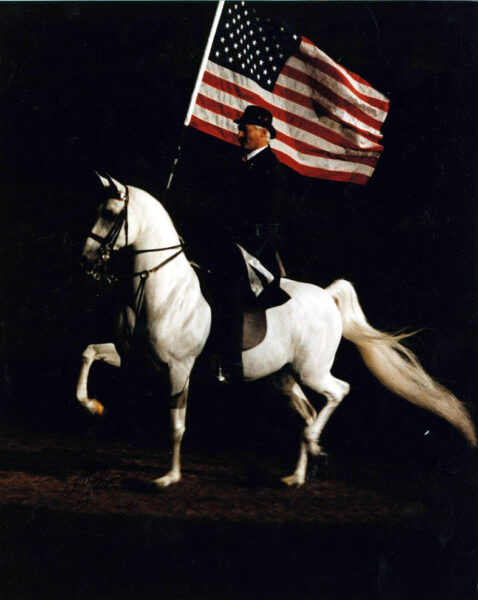
Continuing Mr Gainey’s rule of using a 25% outcrossing policy, his son Dan J and Robin Gainey experimented with various different lines. Egyptian and Polish lines were tried, as were complementary American domestic lines, with varying degrees of success. Then the US National Reserve Champion Stallion Bey Shah (Bay el Bey x Shah of Ofir) was used and became an instant hit. Among his outstanding Gainey-bred offspring was Gaishea (ex Gai Dream), a charismatic grey that rocketed to the top of the show scene and captured the US National Mare Championship. In turn, Gaishea foaled a grey colt, sired by the incomparable Gai Parada, who was named prophetically Gai Monarch. This new king of the Gainey programme took on – and beat – all opposition and among his many awards, he was the Canadian National Champion Stallion.
A tall, elegant horse with fantastic movement, Gai Monarch sired the excellent mare Gai Portia, who continuing the original thread, in turn produced a most beautiful show mare, the Khadraj daughter Kharrea PGA, who was sold to Ajman Stud and was the winner of the 2008 Arabian Breeders’ World Cup Junior Mare Championship.
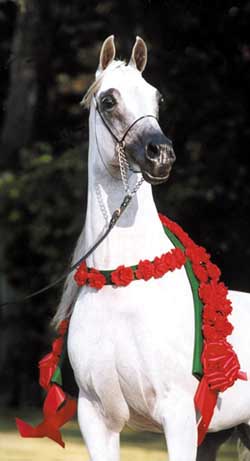
A voyage of discovery
In the early 1980s, I visited the Gainey ranch for the first time, curious to see for myself how these linebred horses looked in the flesh; I was captivated! The uniformity of the herd, the constant refinement and elegance of the horses as well as their embodiment of Arabian type was stunning. Although he was almost 30 years old, Ferzon was in great shape and had that very special air about him that denotes greatness.
The mares and the youngstock were enchanting and there were some exciting young stallions in the barn, including Gai Gajalic, Gai Ferzon Louis and Gai Warsaw. However, Gai Parada’s appearance simply stole the show! Tall, alabaster white, with simply the most beautiful head, his overall appearance was exquisite. Here was a talented, hard-working, proven athlete that was so very much Arabian in his appearance. Full of type and quality, Gai Parada also had huge presence, never failing on any of my subsequent visits to impress. Robin remembers the horse: “Gai Parada was a perfect example of everything that we, as breeders, were trying to create: National Champion Driving Horse, National Champion Halter Stallion and a great, sensible cow horse out on the farm. His get, grandget and great-grandget continue to exhibit those valued qualities generation after generation.”
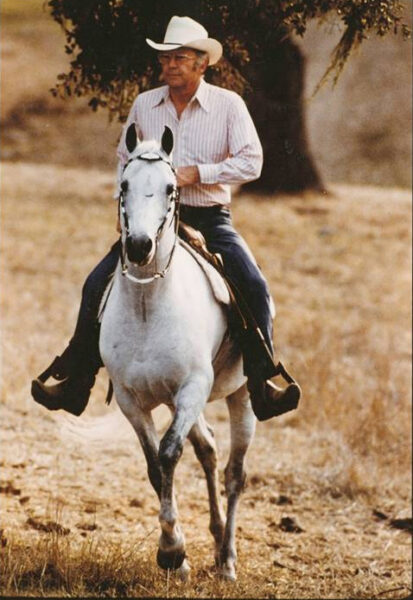
Part two will continue next week, as we move onto the first Gainey horse brought to the UK.


